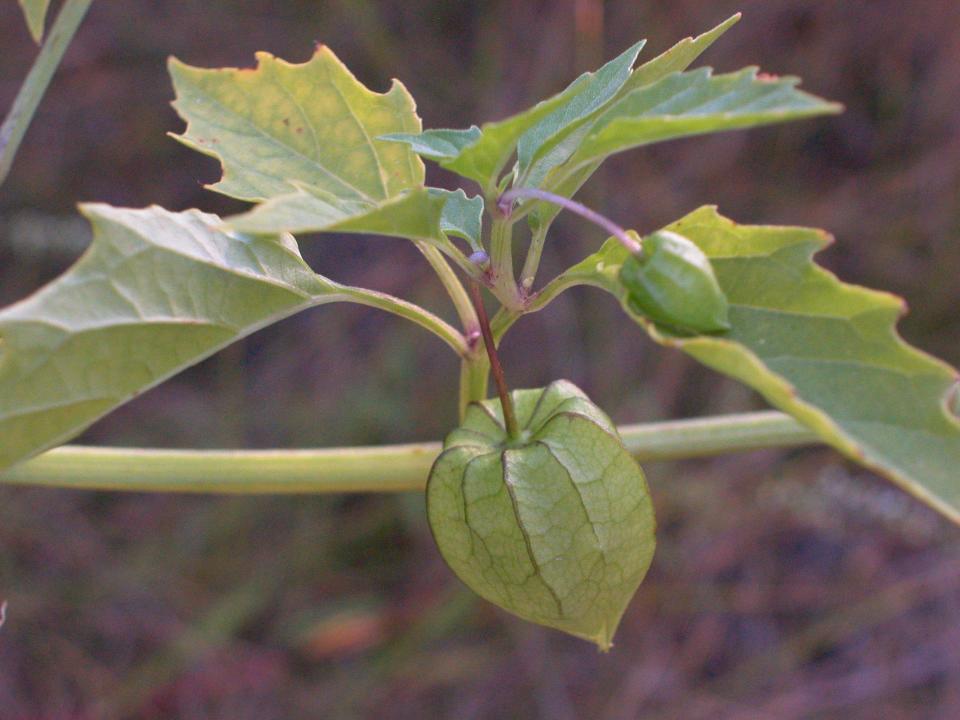Native American weed produces an invisible fruit | Mystery Plalnt
In the magic garden, this little weed serves as a knee-high street light, towering above the crickets and toads on a late summer night. Along its branches are dangling lanterns, and these shine down, in a make-believe imaginary way, illuminating the ground for the little critters.
This plant is a member of the tomato family…which also includes potato (Irish, not sweet), nightshades, petunia, and garden brugmansias. This family (known as the Solanaceae) is a big one, with many thousands of tropical and temperate species.

The family is well known as a source of many other edible species (eggplant, peppers) but there also some very poisonous members. I suppose that we could get into a discussion about tobacco being pretty poisonous at this point…but let’s just say that it, too, is a member of this plant family.
Our little Mystery herb (Chinese lantern, smooth ground cherry, Physalis angulata) is an annual weed, and it produces a smooth, angled stem, which is hollow. Its leaves are up to 4 or 5 inches long, and usually sharply toothed. Small flowers appear in the leaf axils. Each flower bears a non-descript, green calyx, and above that, five yellow petals.
The petals commonly have a brownish blotch near the base, and there are five stamens, each tipped with a blue anther. The flower hangs downward as it opens and matures. After pollination, the ovary undergoes an impressive period of growth, and swells, forming a cherry sized, spherical, green fruit, which is invisible. Invisible?
Well, it's invisible, since it can't be seen from the outside. While the maturing ovary has been swelling, the green calyx has turned on an even more amazing spurt of growth, to the point that a thin, papery, green husk is formed around the young fruit, almost like a balloon. Botanists say that the calyx is "inflated." Look closely at one of these, and you will see a small hole at the bottom of the balloon.
As it ripens, the fruit changes from green to yellow or orange. The plants bloom from late summer up to the first frost, when they will be killed. The dangling lanterns, though, will remain attached through much of the winter. The fruits are said to be edible, and are likely to be chewed up by animals, thus dispersing the seeds within.
This species is a native American, widespread in South America, and commonly seen as far north as Ohio. It is something of a weed, and likes to grow on open roadsides and disturbed places…old gardens and compost piles are favorite areas, as are sand bars along rivers. Plants on particularly "nice," fertile spots can attain a height of up to two or three feet, but it can bloom and set fruit in poorer places, too, where it usually ends up shorter.
Next time you are at your local mercado looking for ingredients for some salsa, be sure to check out the tomatillos. They are the fruits of an herb which is closely related to our Mystery Plant.
John Nelson is the retired curator of the Herbarium at the University of South Carolina, in the Department of Biological Sciences. As a public service, the Herbarium offers free plant identifications. For more information, visit www.herbarium.org or email johnbnelson@sc.rr.com.
This article originally appeared on Tallahassee Democrat: Chinese lantern is an American native with an invisible fruit

